When Ford’s T-Drive Missed a Beat, Others Picked up the Tempo
Donald Lewis Carriere (1929–2016) was a research engineer with many patents to his credit, and his 40-year tenure at Ford likely involved many vehicles we know and admire. We’ll come to his patent for a unique powertrain with T-shaped layout in a moment, but first a quick bit about the man himself. Any person who comes up with a patentable idea is clearly worth a closer look, especially when that idea that could have made production in an automobile.
Details of Carriere’s life outside of his patents are sparse, but he earned a doctorate from Wayne State University in Detroit and visited his alma mater on a regular basis to discuss not automobile engineering but alcoholism. Those talks became a book, currently out of print, probably because some automotive journalist bought the last copy. To wit, the book is remarkably informative but engineering-grade dry, with no personal anecdotes or color commentary. Yet Carriere’s vigor in fighting alcoholism makes one thing clear: His personality is both analytical and passionate.

Some people say, “I’m ashamed to go to the doctor.” My response to that is, “What the hell is there to be ashamed about when you’re fighting for your life? You’re in a death situation here. Its hardly rational to be ashamed when you’re fighting for your life.”
I suspect Carriere understood that human behavior is often irrational, and I wouldn’t be surprised if his engineering passions were sometimes mistaken for irrationality. How else could he patent an automotive powertrain with an inline engine arranged in a “T” with its transmission, instead of in a straight line?
Perhaps you first heard about Ford’s T-Drive from a blurb in Car and Driver back in the late ’80s. Or maybe you saw it floating around in the early days of auto blogging. But now we have access to Carriere’s 1991 patent submission, thanks to Google Patents. Here we see an inline-eight engine, mounted transversely, and a “gearing mechanism” that forms a “cross-axis configuration” in relation to the engine’s crankshaft. The transmission even has a straight-line output for a rear axle, giving Ford the space-efficient option for an all-wheel-drive system. Or rear-wheel drive exclusively. Or only front-wheel drive. Perhaps Ford was making modular moves before a certain 4.6-liter V-8 got that name?
This powertrain lived beyond the realm of patents and vaporware dreams. Roughly three years before Carriere’s patent filing, Ford stuffed T-Drive prototypes into a pair of Ford T’s: the Tempo and a Fox-body Thunderbird. Judging by their utterly convenient positioning in these photographs, it’s likely that both cars were trotted out for the media to photograph, hoods open, with T-Drive technology exposed for all to see.
That could have been the end of the story, but Ford wisely implemented T-Drive for the ritzy concept car scene. A radical powertain setup is indeed a good reason for a wildly styled concept car aimed at the heartstrings of auto show visitors and media wonks alike.
The 1991 Ford Contour concept’s unique proportioning only hinted at the revolutionary bits under the hood, but it’s okay to hide Carriere’s masterpiece with a body that’s this well surfaced. Radical HID headlights mounted atop a front end cribbed from a Phantom Corsair show how T-Drive allows for a tight, narrow, bullet-nosed enclosure. As we move back, these lines foreshadowed the painfully radical 1996 Ford Taurus. But the sound of a straight-eight engine musta been impressive, possibly justifying the ovoid Taurus SHO’s V-8 engine when it made production.
Perhaps connecting the V-8 SHO to T-Drive’s eight-pot engine is a stretch, but the Contour’s wide-open spaces were certainly a precursor to cab forward design. As Ford design vice president Jack Telnack said, T-Drive “shortens the engine compartment by 4 to 12 inches compared to V-6 and V-8 installations in small to large cars.”
To prove that point, the Contour has a shockingly beautiful, extruded aluminum space frame jointly made by Reynolds Aluminum and Ford’s Advanced Manufacturing teams. That frame has both style and substance, as it hugs the T-Drive’s east/west orientation like no off-the-shelf platform could. Ford states the Contour places “the transmission rearward on the vehicle centerline for improved weight distribution and overall package efficiency,” and the “fore and aft dimensions are just one cylinder wide, improving safety characteristics and providing more interior space.”
Enter the Ford Contour’s alter ego as a people mover, the Mercury Mystique concept, which clearly wasn’t the badge-engineered disappointment that made production just four years later. This multi-purpose vehicle uses the same aluminum frame and eight-cylinder T-Drive, but Ford insisted that “manufacturing flexibility permits engines of four, five, six or eight cylinders.” This is ideal for a space-efficient MPV body as it allows “the capability of using high-displacement engines without increasing vehicle size.”
Ford clearly worked hard to squeeze the most juice out of T-Drive’s unique value proposition, but the 1990 Mercury Cyclone sedan was a prelude to concept car greatness. There’s very little information about the Cyclone, but its press release does mention there is “sufficient space to package a large eight-cylinder engine.” That’s hard to accomplish in a nose that short, so odds are this was a T-Drive vehicle before the design had a marketable name.
That’s where the T-Drive story could end, as Ford instead greenlighted the impressive and generally well-regarded Duratec line of four- and six-cylinder engines with dual overhead cams and an utterly conventional drivetrain layout. But there’s much more, thanks to a Ford Tempo race car, the 24 Hours of Lemons race series, and David Eckel and Greg O’Brien of Cheesebolt Enterprises.
Your eyes do not deceive you, as these two guys recreated the original Tempo T-Drive from the grainy photo published in Car and Driver all those years ago. Well not exactly, but they also didn’t have Ford levels of budgeting to throw at the project. It gets the point across, though, so I asked Eckel and O’Brien about their inspiration to make this abomination tribute to a forgotten slice of Ford history.
Turns out their Tempo was initially saved from a South Jersey back yard, sunken in the ground and full of wasps. It received a roll cage and raced on the stock 2.3-liter motor and automatic gearbox for two Lemons races, one of which earned them the coveted Index of Effluency award (for making something really dumb into a legitimate race car).
When the original engine finally blew up, other members of their team were mostly sick of racing the Tempo. So Eckel and O’Brien were at a crossroads: Ford had many superior engines that could fit between a Tempo’s strut towers. But the two enterprising racers couldn’t turn back once T-Drive got in their soul. As Eckel put it:
“While riding a ski lift after a multiple hard cider lunch, I had the bright idea to replicate the Tempo T-Drive by lining up two four-cylinder motorcycle engines. I immediately texted Greg from the slopes to get his input. He loved the absurdity, and he didn’t completely reject the mechanical feasibility of such a thing. The next thing we knew, I had two Suzuki Bandit 1200 motorcycles in my driveway.”
O’Brien also added that T-Drive isn’t the best way to power a Ford Tempo with a motorcycle engine, and they knew “exactly how we would do it, and it would not be this way. But we did T-Drive because we can.”
Aside from the inline-eight-cylinder engine layout and those beautiful exhaust headers, very little of their Tempo resembles Carriere’s work at Ford. Perhaps it’s better if Eckel, in a Ford Engineering costume, gives you the details.
If that sounds complex, getting the T-Drive Tempo running is an absolute ordeal. Both Bandit motorcycle clutches are controlled from the cockpit, via levers on handlebars mounted to the Tempo’s steering column. The handlebars also have the starter buttons for the engines, and Eckel says “a Rube Goldbergian push-pull throttle linkage operates eight carbs using five cables, seven springs, and a bell crank made from the Tempo’s HVAC control levers.”
Making T-Drive work on a homebrew 24 Hours of Lemons budget was not without its pitfalls, as Eckel noted: “Every work session ended with an unsolvable problem that somehow had a possible solution by the next session.” Like the motorcycle engines, which were an impulse buy without measuring first, because Eckel “figured a Tempo engine bay was wide enough.”
Getting the engines low enough to see over them was an issue, mostly because they were retaining the Tempo’s manual transmission. The driver’s side Suzuki engine almost rests atop the Tempo’s bell housing! Then there were the challenges of fabricating the exhaust (which isn’t nearly as beautiful as Ford’s concept cars) and making the input shaft/flywheel/clutch/engine work in harmony. As Eckel said, “doing so required precise machining from a non-healthcare professional.”
O’Brien added that the end result was worth it, because “once we sorted it all out, the T-Drive system was surprisingly robust. We had way more problems with the engines being tired, as one has 45,000 miles and the other had 100,000.” That’s an important item to consider when participating in an endurance race, as O’Brien says T-Drive can “accelerate briskly” with a fully independent suspension that makes for a “decent handling car for what it is.” Indeed, the little white Tempo passed faster cars in the straights, and lit up the inside front tire when exiting corners. Having spent some time inside this vehicle myself, I believe O’Brien does a great job explaining how T-Drive feels when behind the wheel:
“It’s overstimulating. High-pitched noises. Bangs. General vibration is always there, but at constantly changing frequencies. Everything is rigidly mounted, unbalanced, and spinning faster than ‘engineering theoretical max rpm’. We were scared to death of it in early 2023, but now it’s just a fun novelty car. I’m not sure it’s a good thing that this is now normal for us.”
Since these two know more about implementing T-Drive than anyone outside of Donald Carriere’s circle of influence, I asked if T-Drive should have made production. Eckel was adamantly against it, “No. I like Fords: T-Drive would have bankrupted them with warranty claims.” O’Brien was a bit more optimistic, saying “Not under Ford. They were out of their element with this design. I doubt the Ford customer base would have been willing to pay a premium for T-Drive. It could have been an interesting challenge to Saab, Volvo, etc., or maybe it could be the second act that Merkur so desperately needed?”
I asked how their friends and family feel about a T-Drive Ford Tempo race car. Phrases like “universal incredulity” and “genuine concern for our mental health” came from the racing duo.
Eckel’s son is a mechanical engineering student at Northeastern University, and his classmates assured him his father’s mad scientist plan could never work. Claiming victory over an imminent defeat is one thing, but O’Brien correctly states that the Tempo is “such a car-geek inside joke that not many people get it.”
“It managed to outlast nearly half the field, and it actually worked. The whole crazy idea worked.” — Eric Rood, The 24 Hours of Lemons
Now that the T-Drive Tempo finished a Lemons race and earned its second Index of Effluency award, O’Brien says that people still think it’s insane but “it’s now accompanied by a mischievous grin, not a furrowed brow.” I think their flair for presentation (see the video above at the 14:28 mark) doesn’t hurt their chances at acceptance, either.
David Eckel and Greg O’Brien aren’t done yet, as their Tempo’s durability and Ford’s intentions to make T-Drive in front-, rear-, or all-wheel-drive configurations have them pondering the next version: T-Drive 2.0.
Anyone remember the all-wheel-drive Tempo? You never know where such a Ford Tempo might take us in the future, but it’s a safe bet that Donald Carriere and any other Ford employee who worked on the T-Drive program would be blown away by these two Tempo fans. And for that, I thank them immensely for their contribution to an otherwise forgotten moment in automotive history.
***
Check out the Hagerty Media homepage so you don’t miss a single story, or better yet, bookmark it. To get our best stories delivered right to your inbox, subscribe to our newsletters.
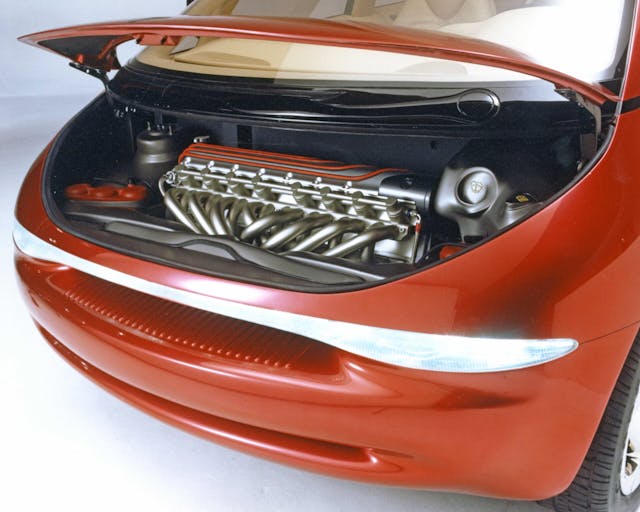


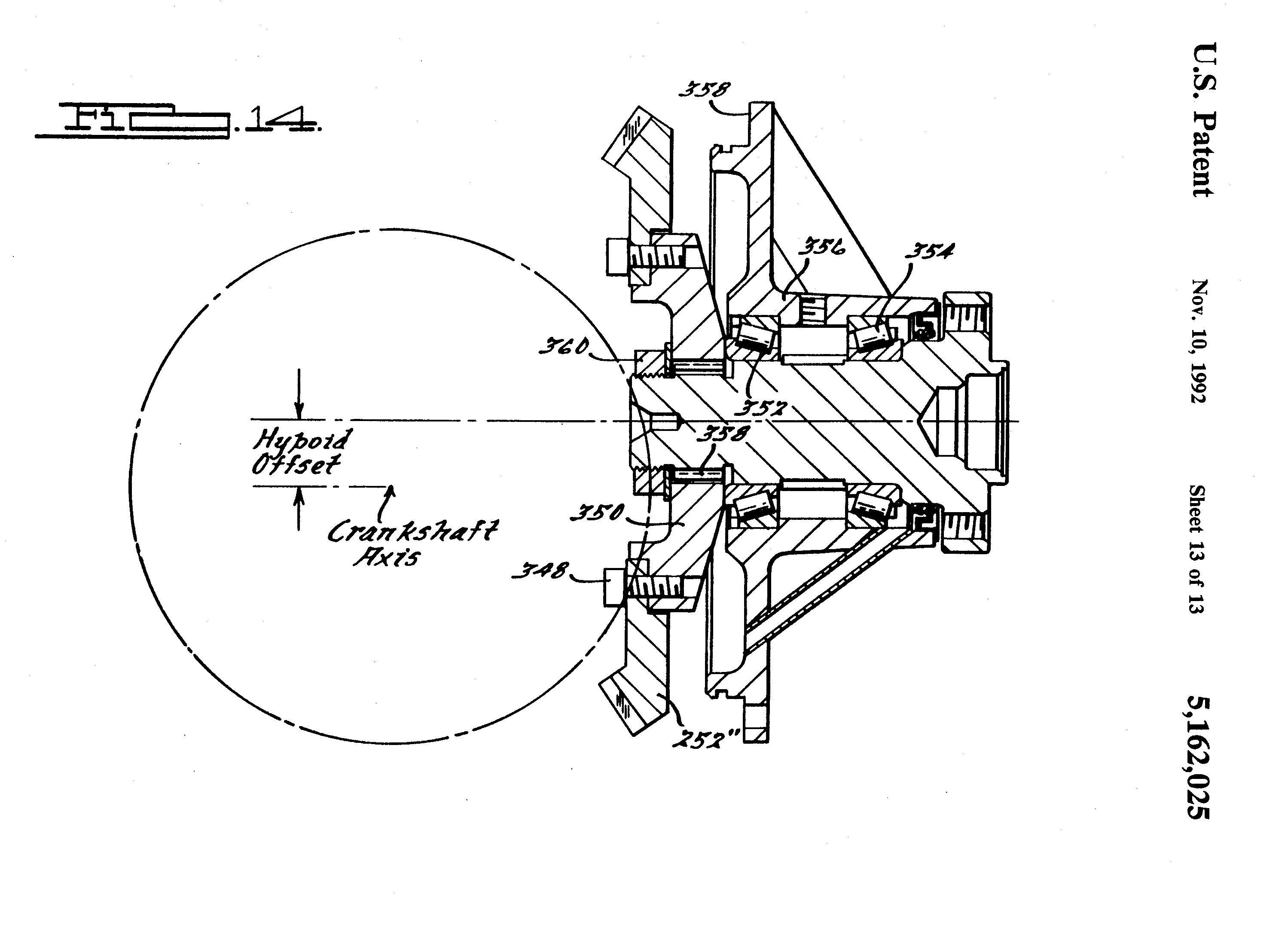
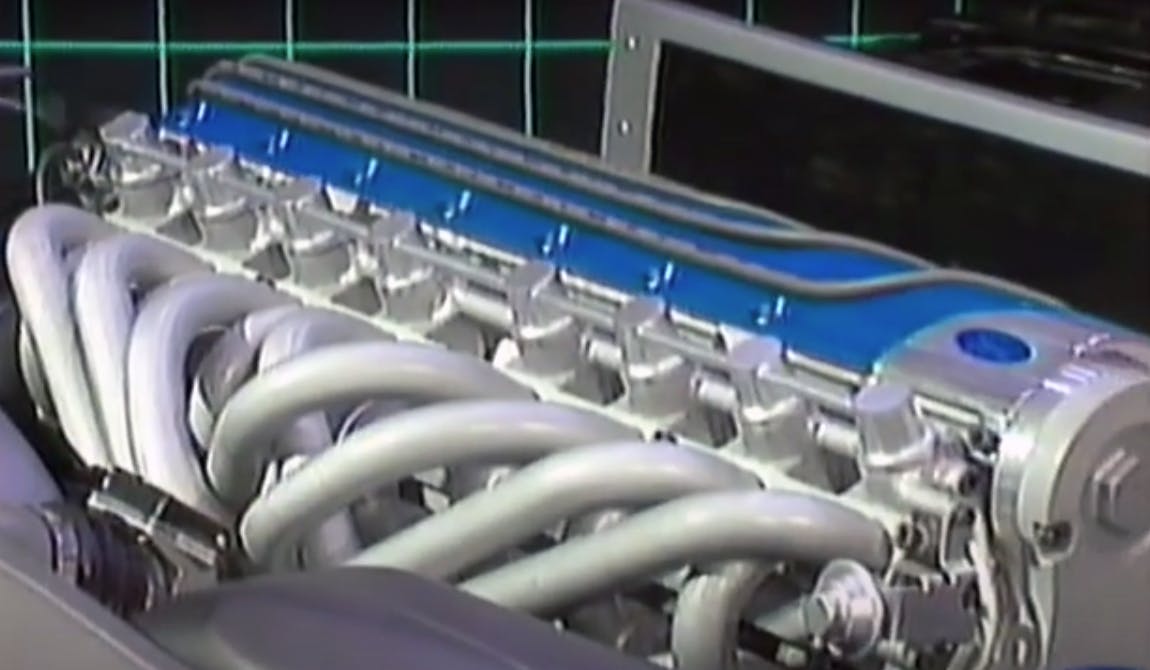
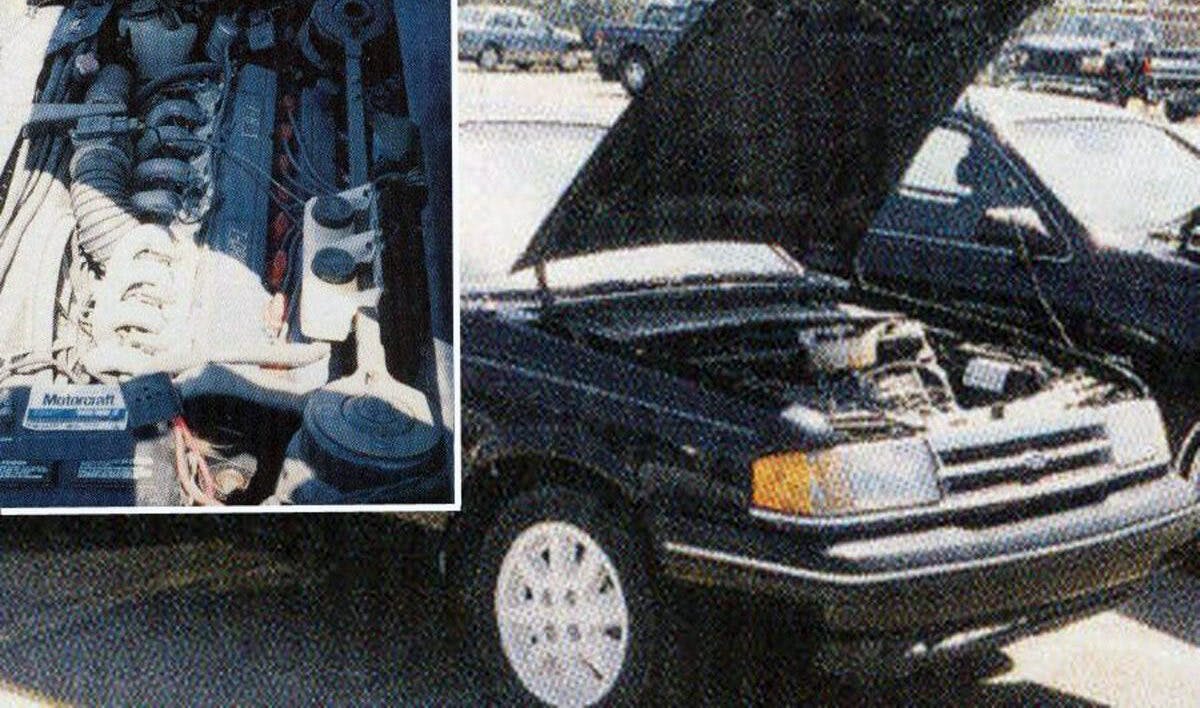
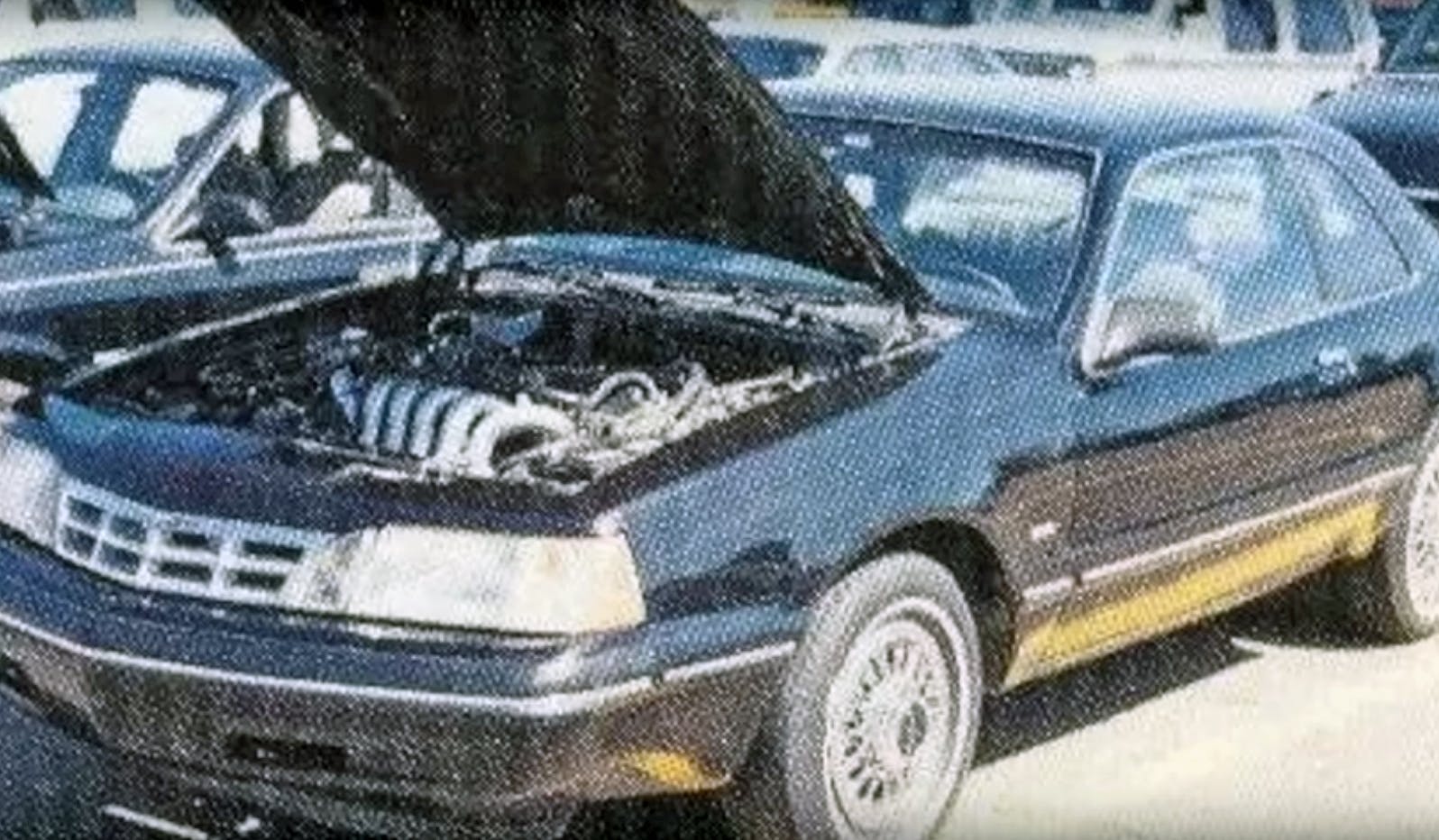
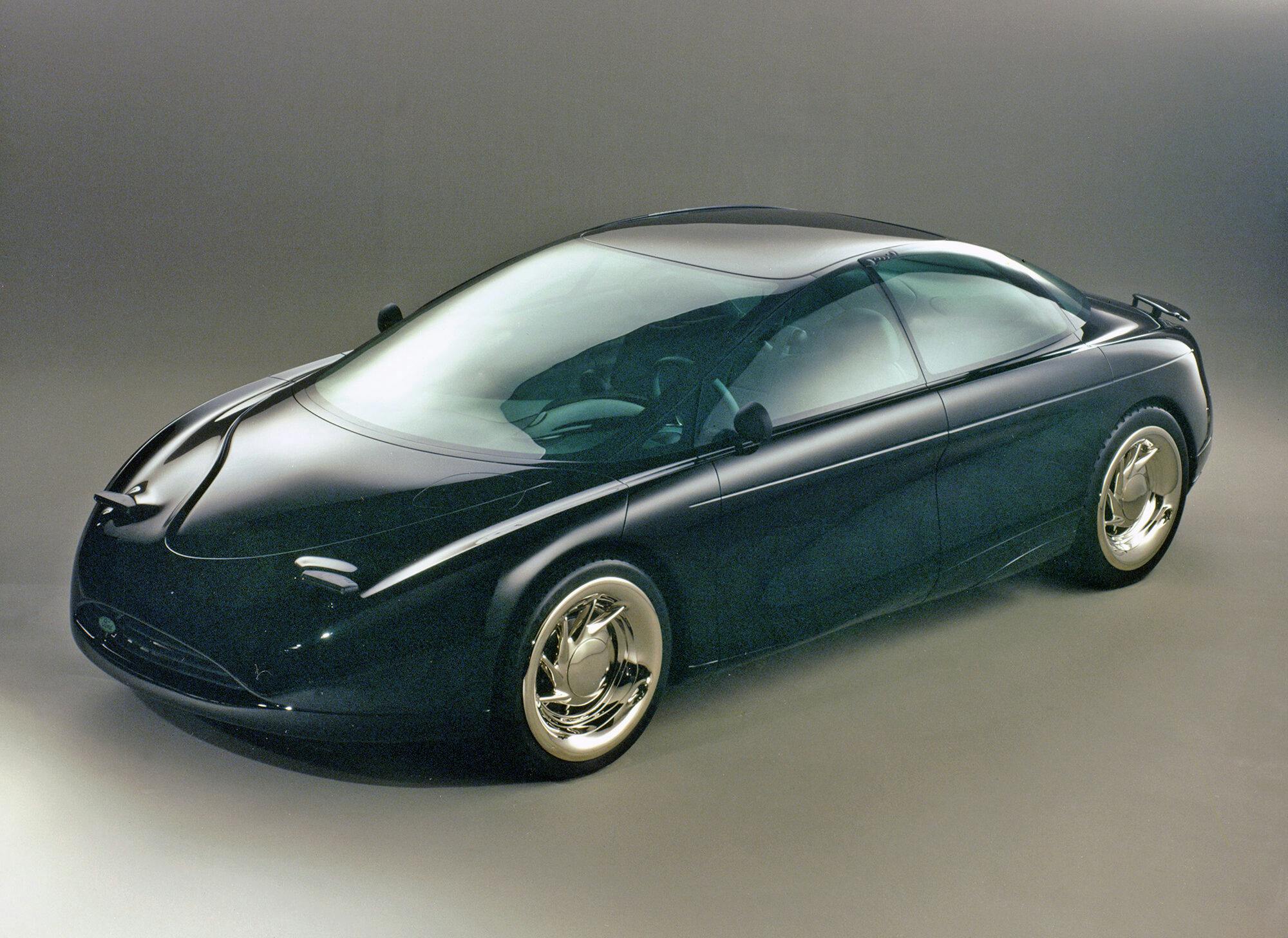
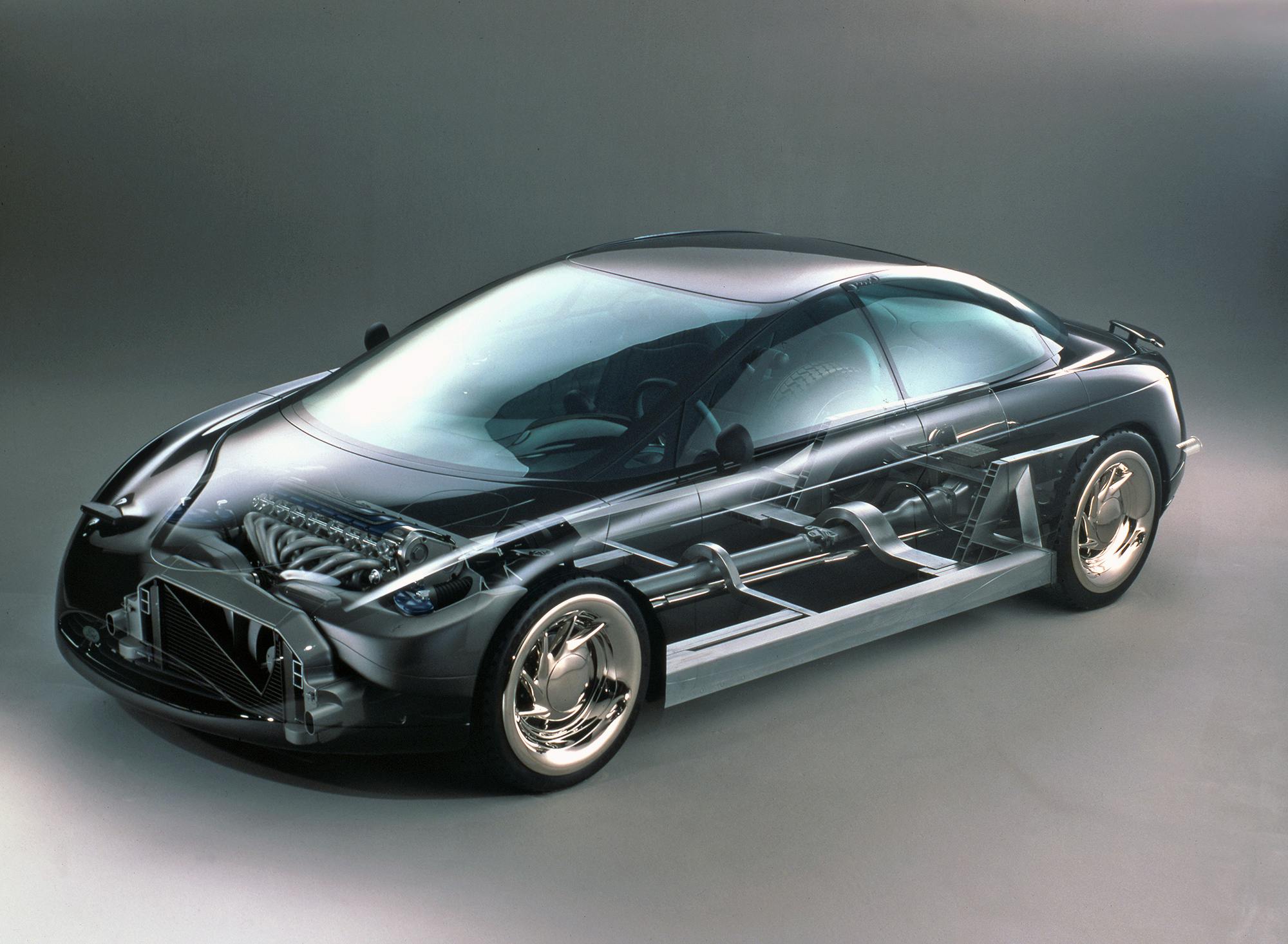
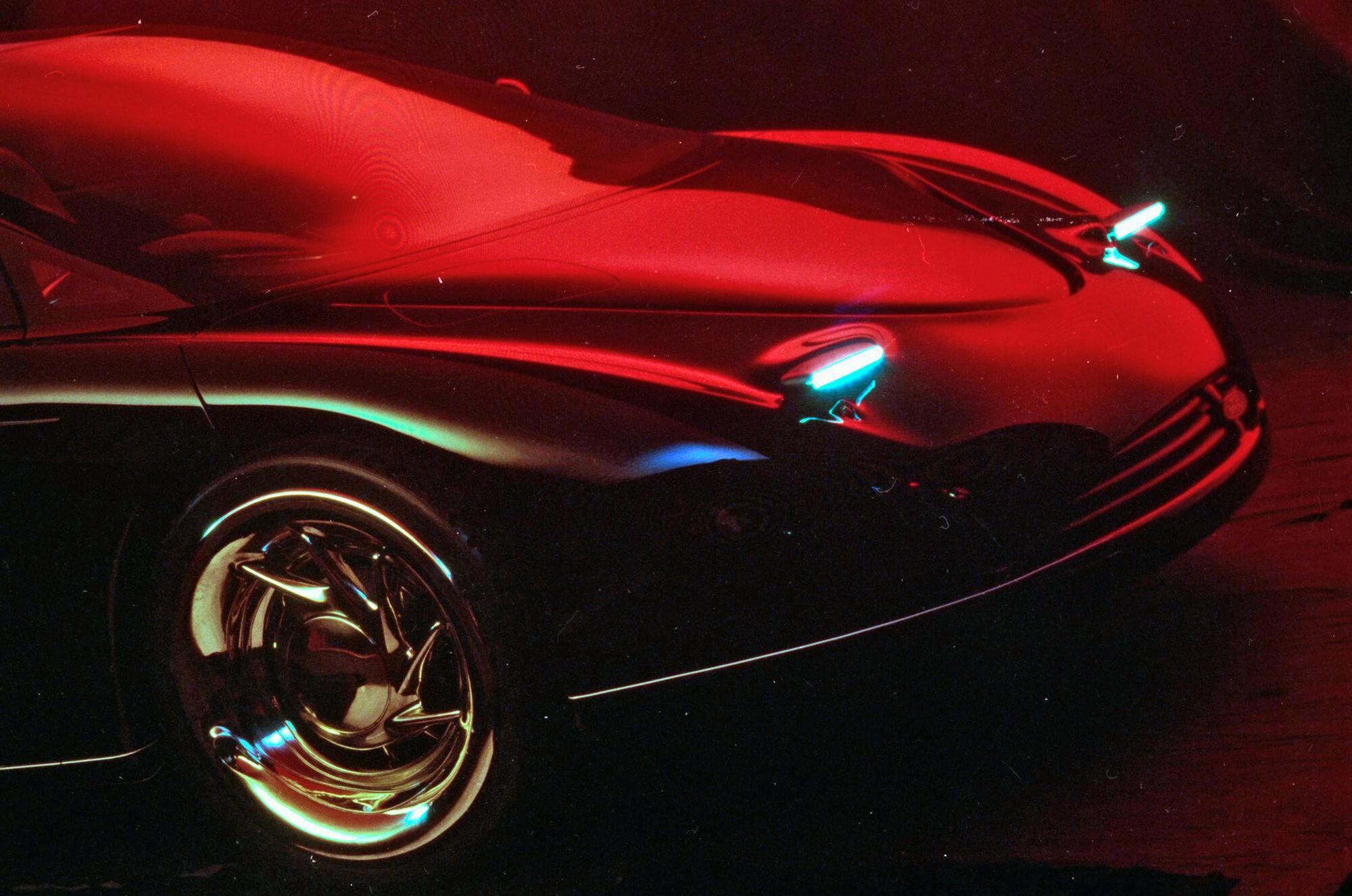
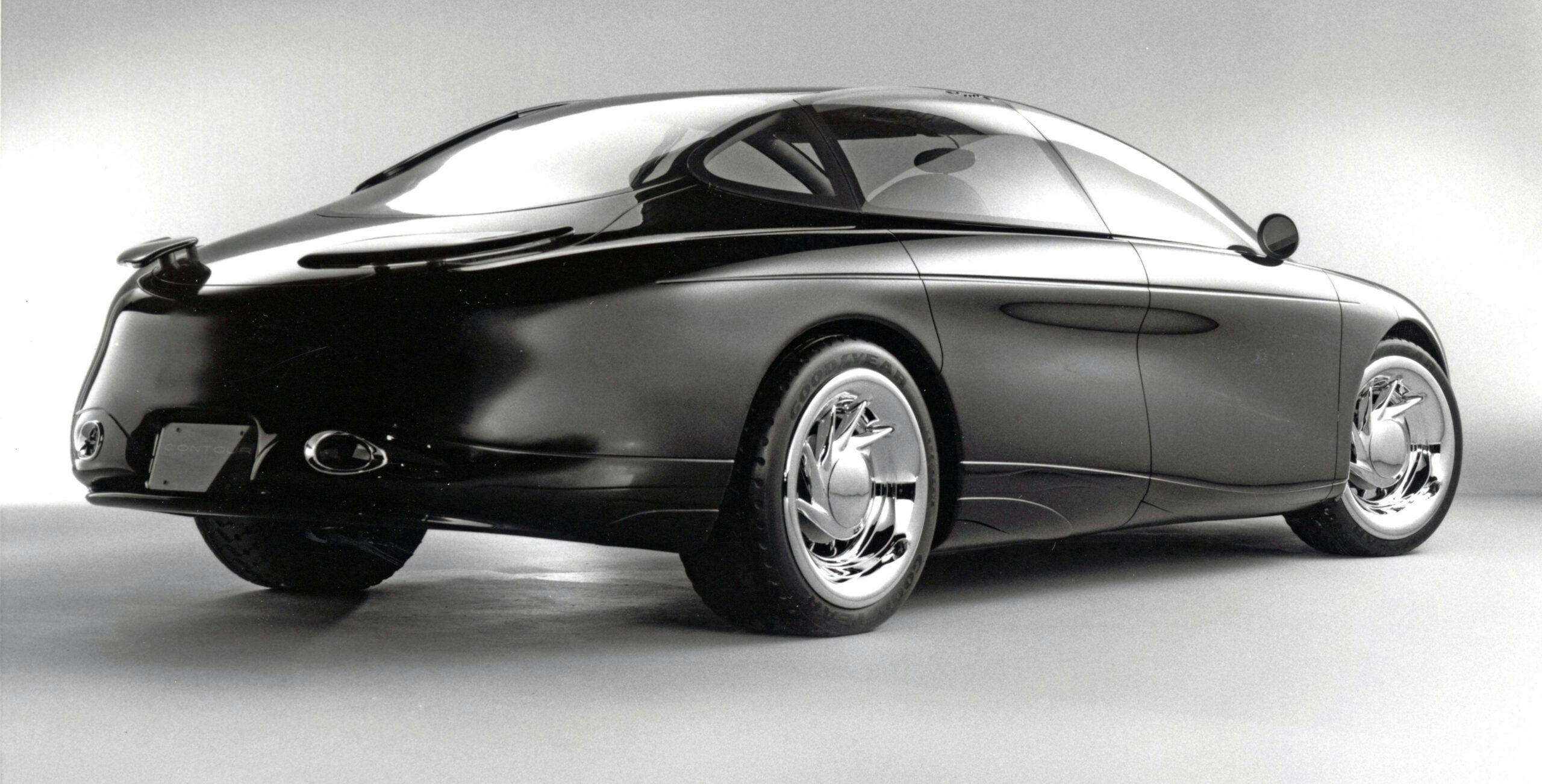
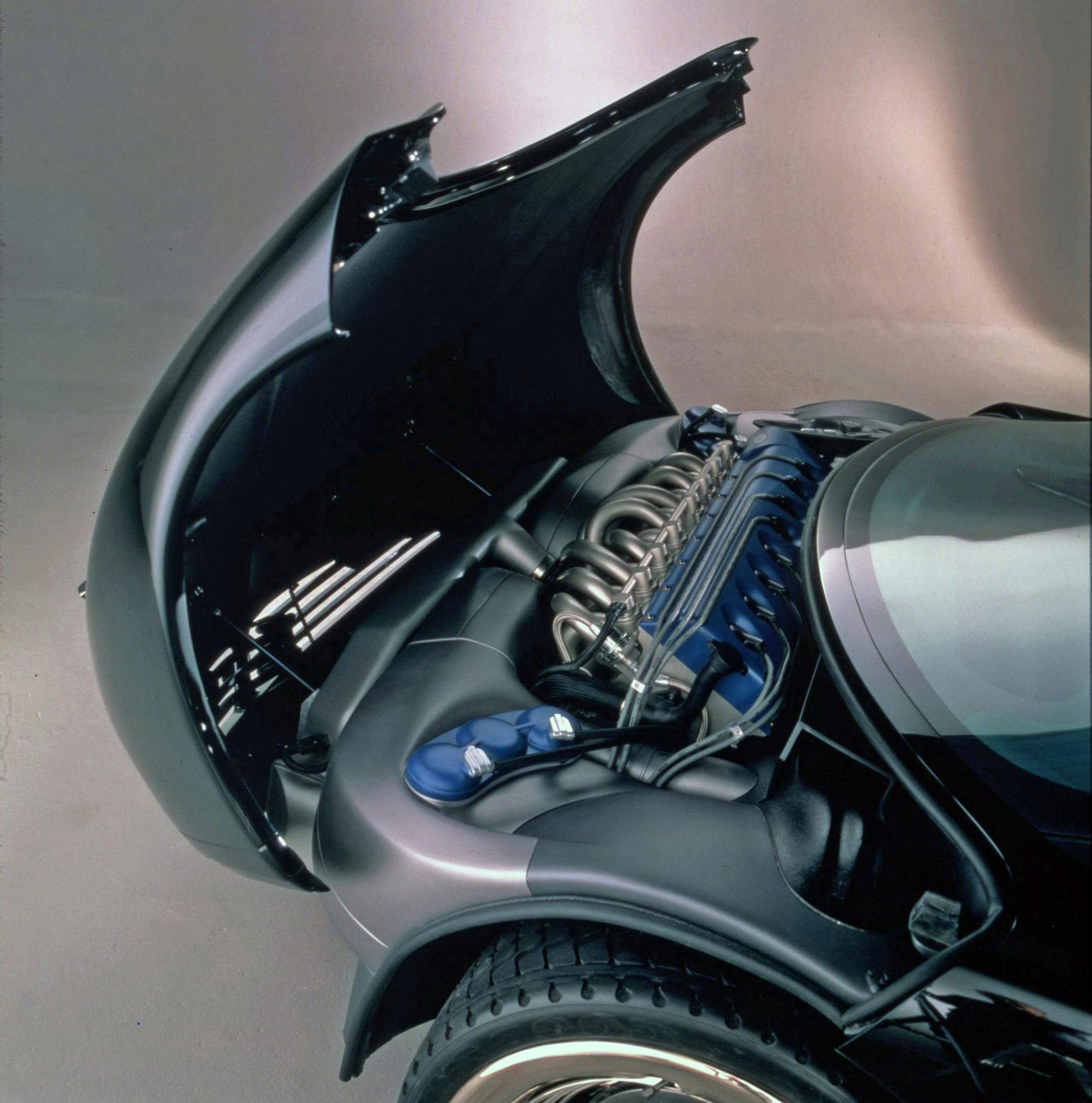
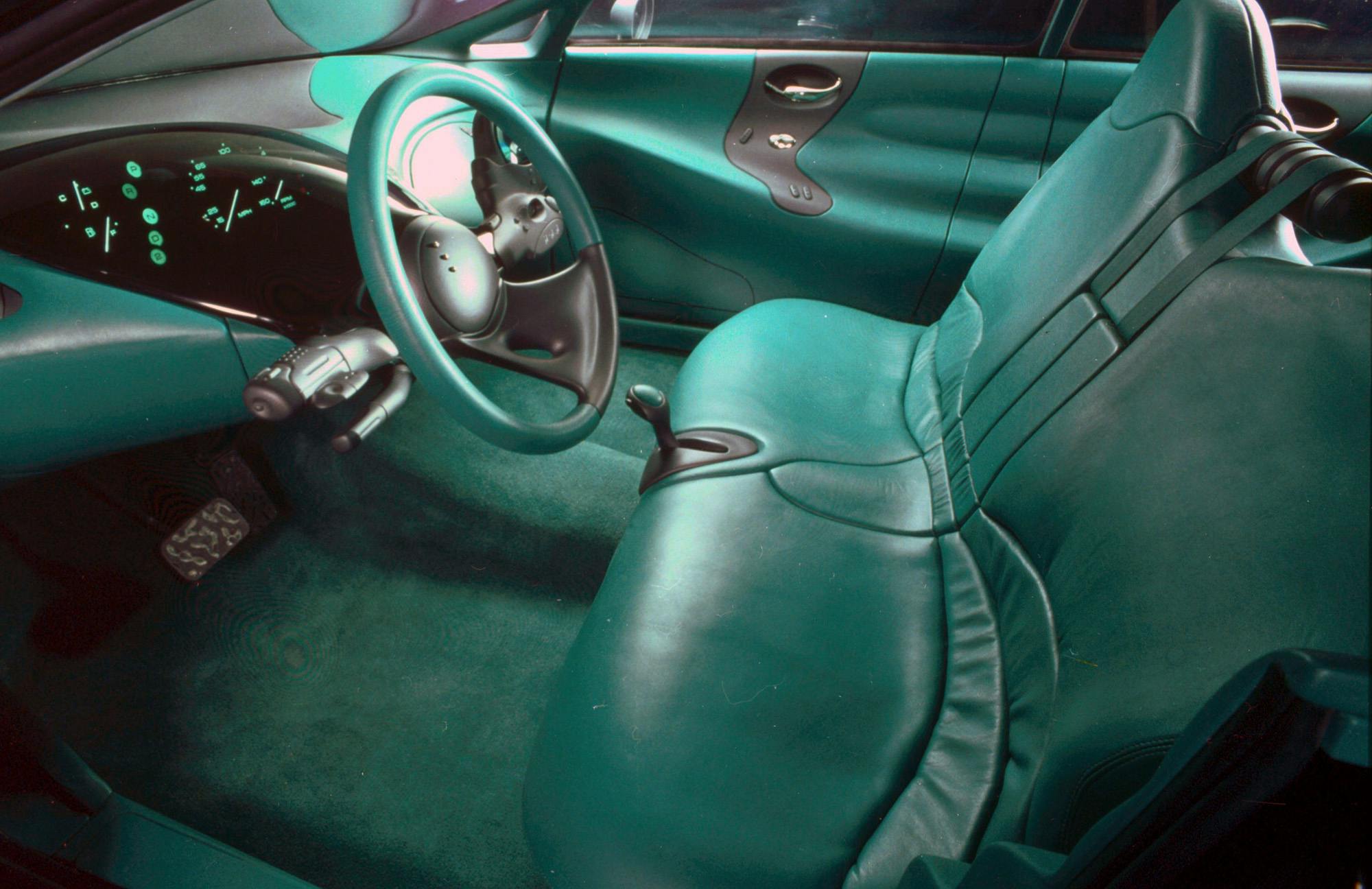
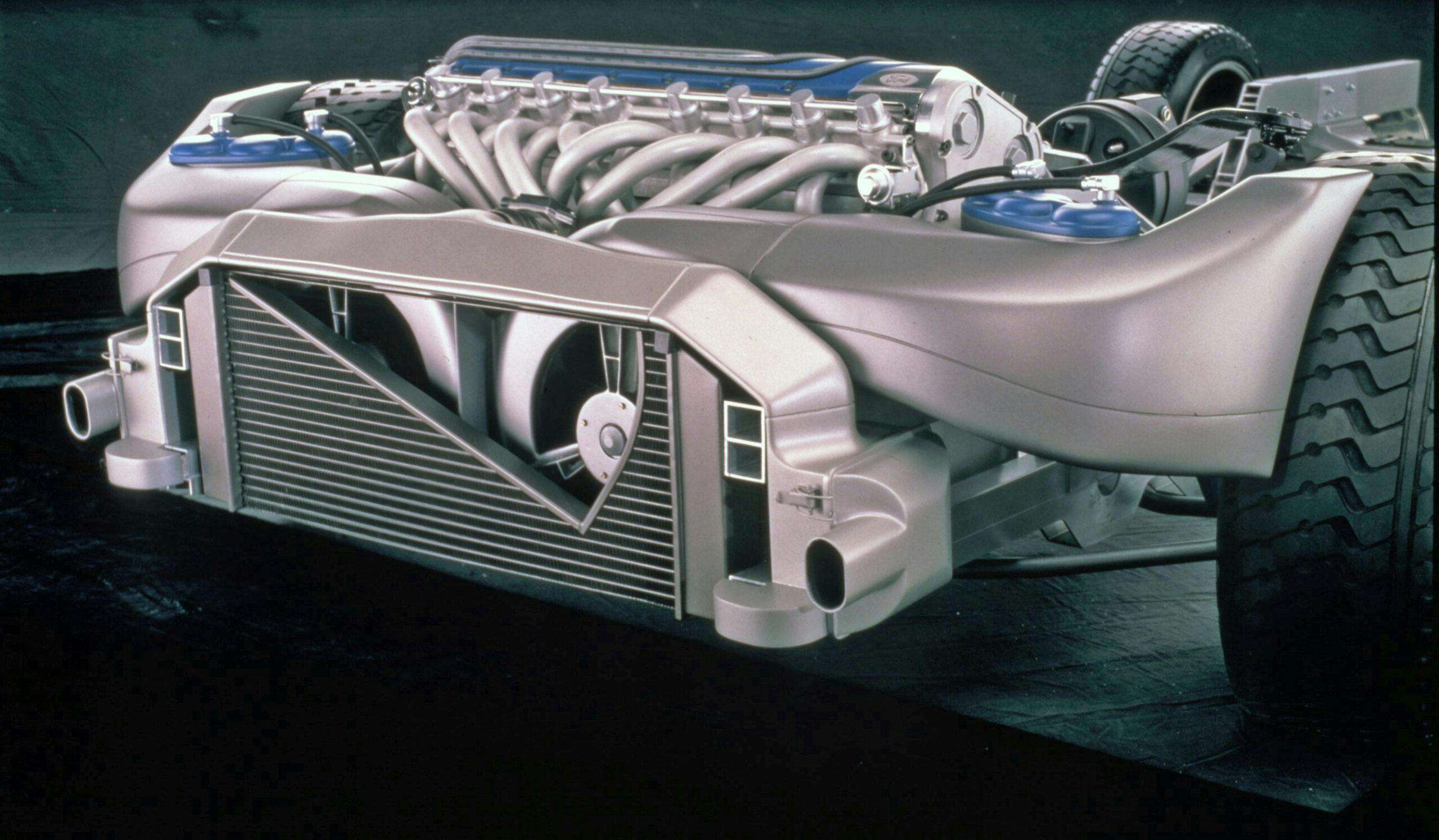


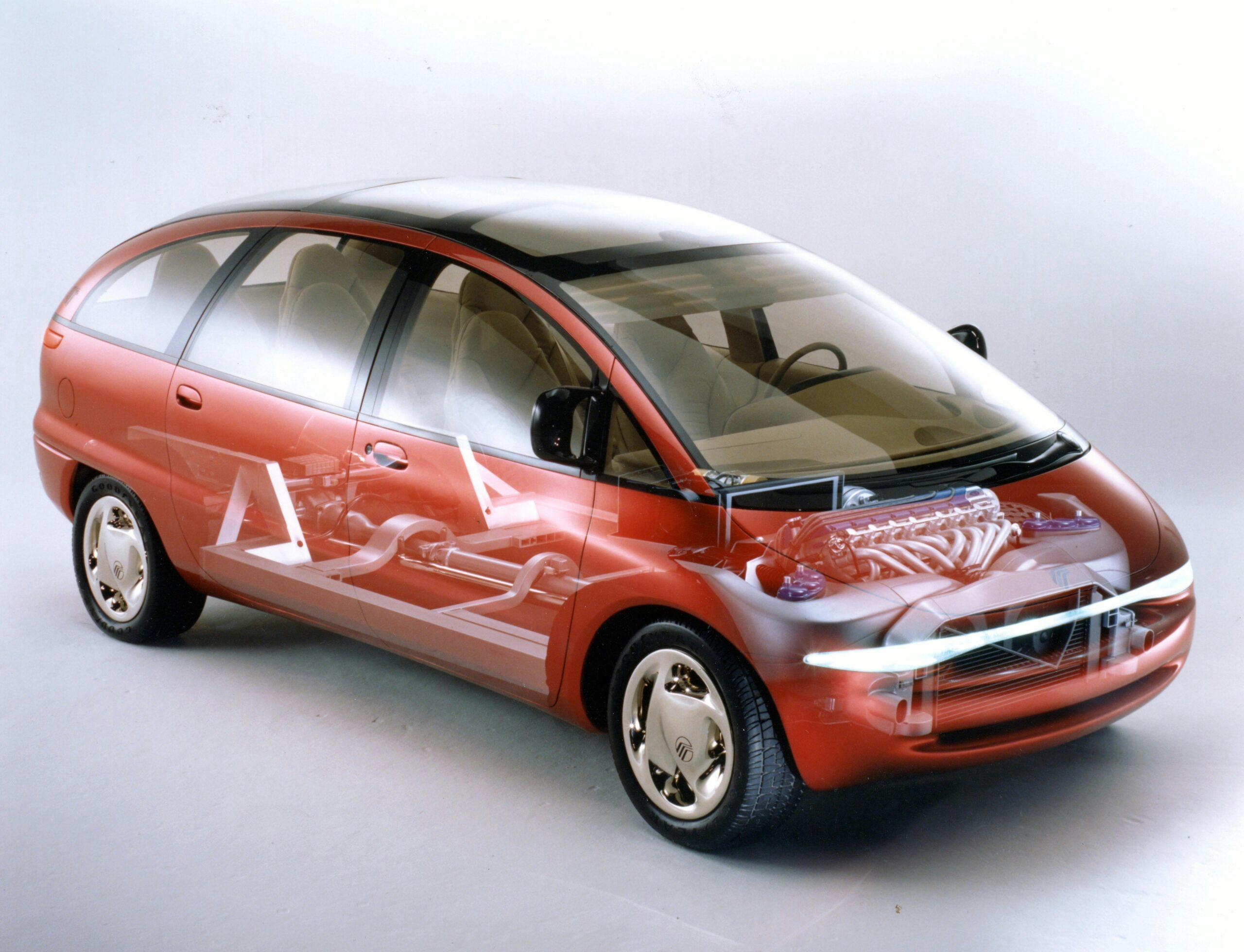
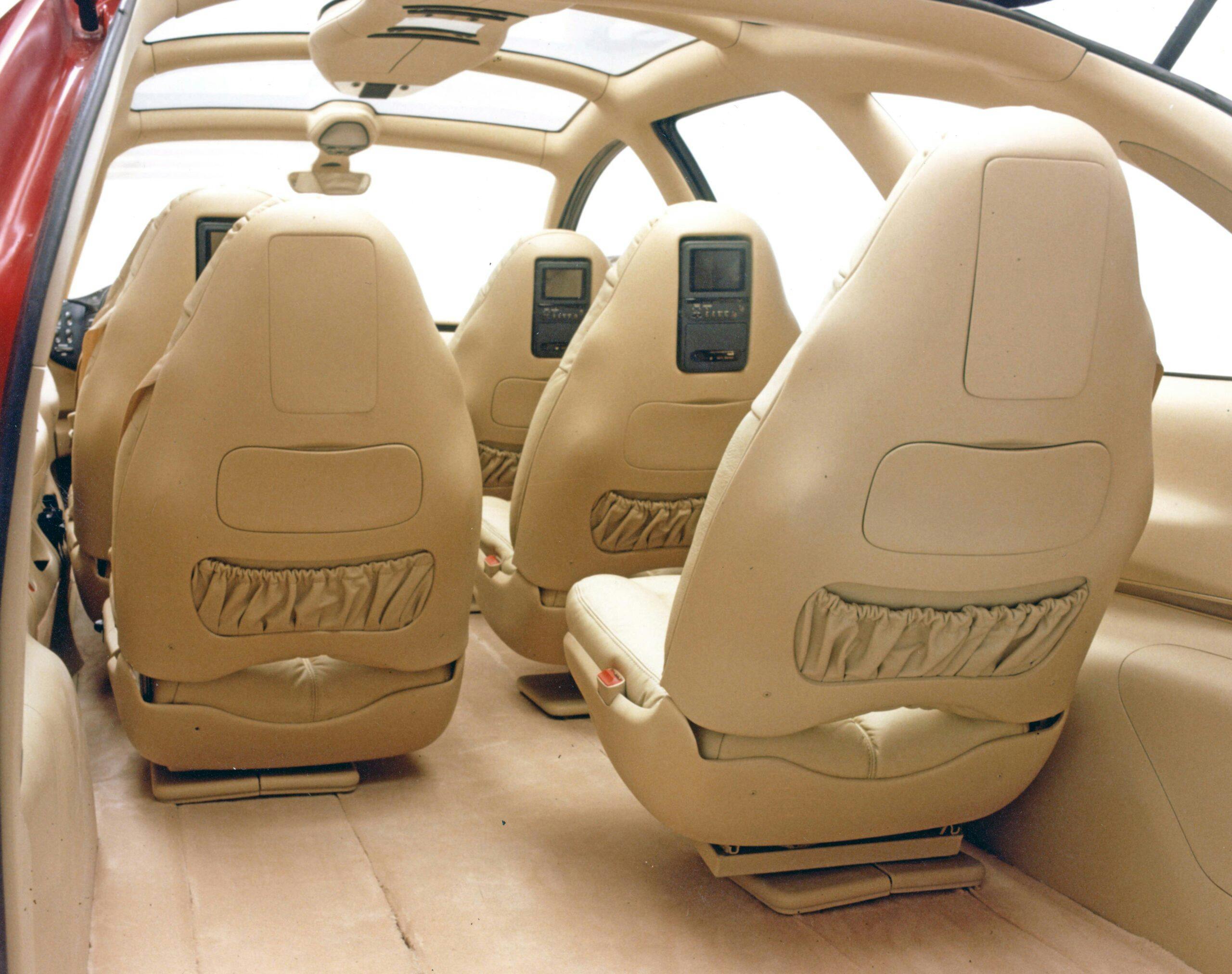
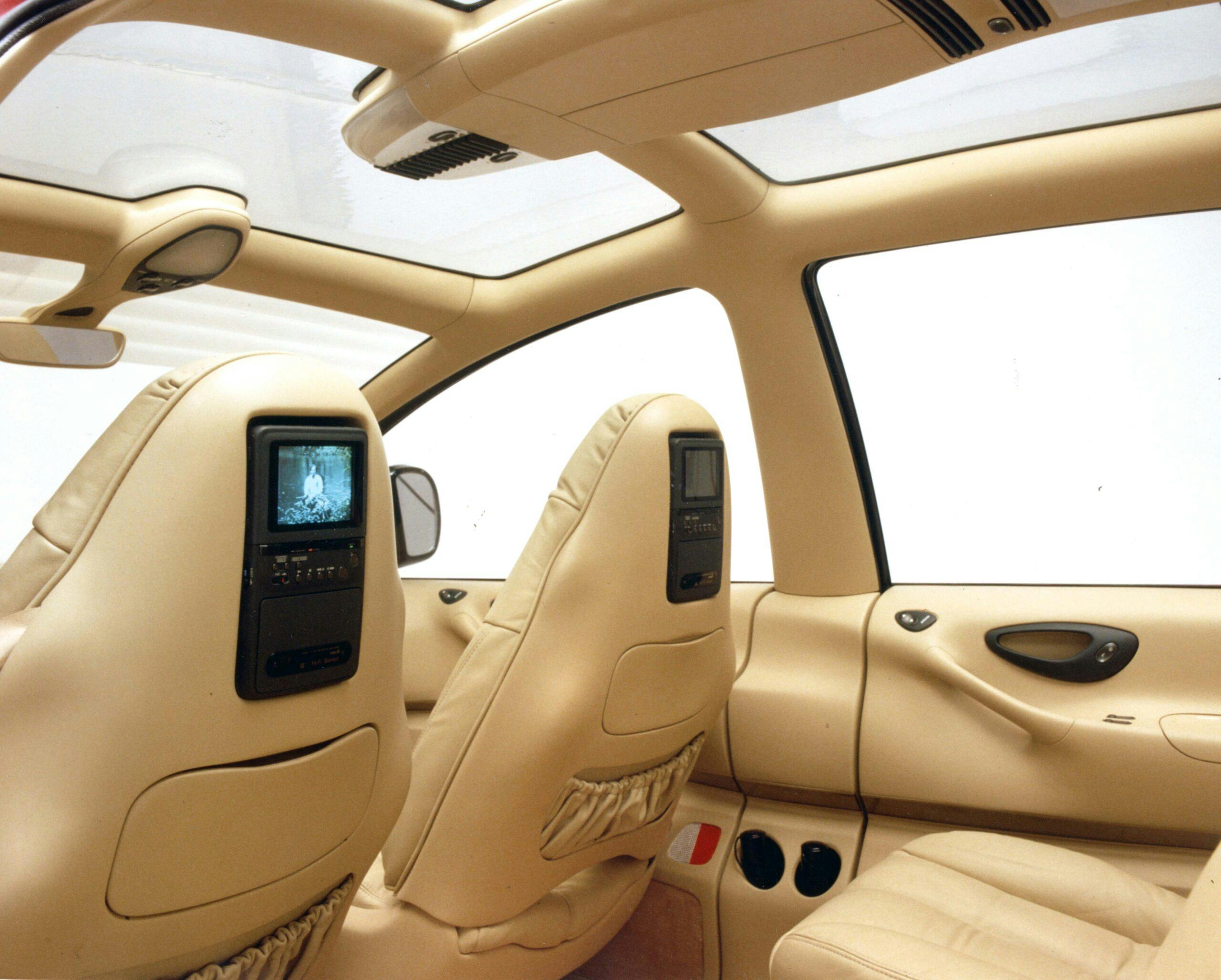
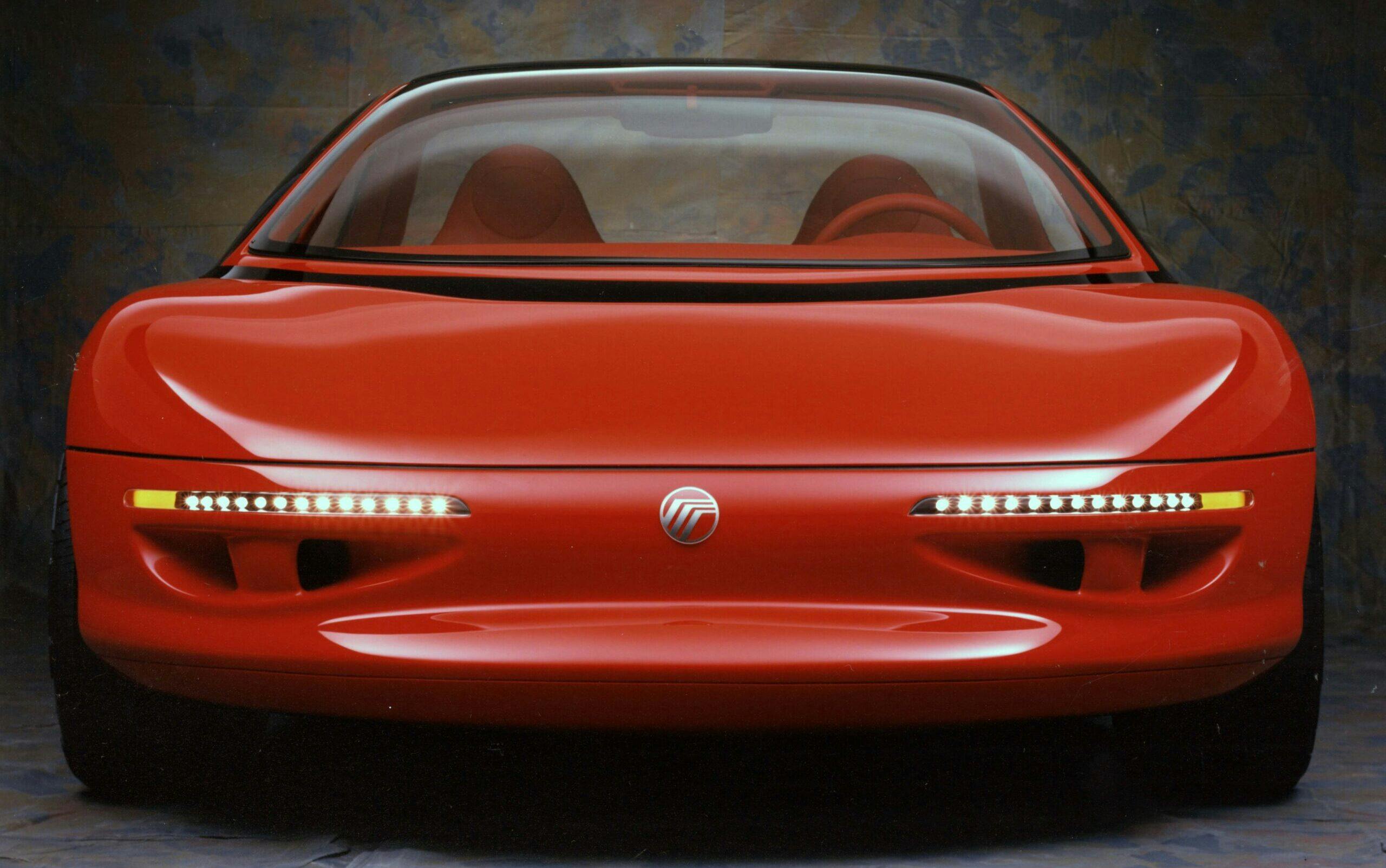

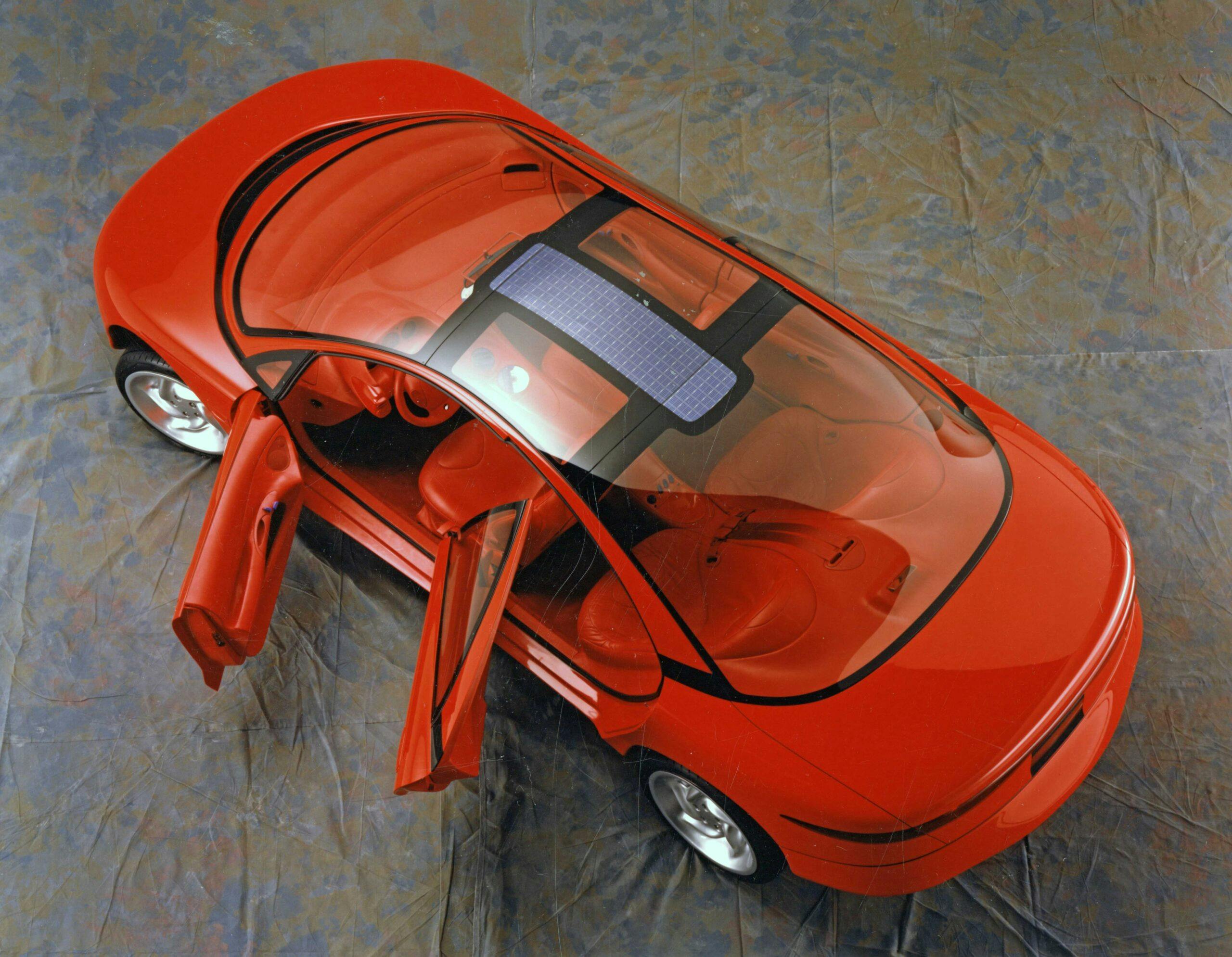
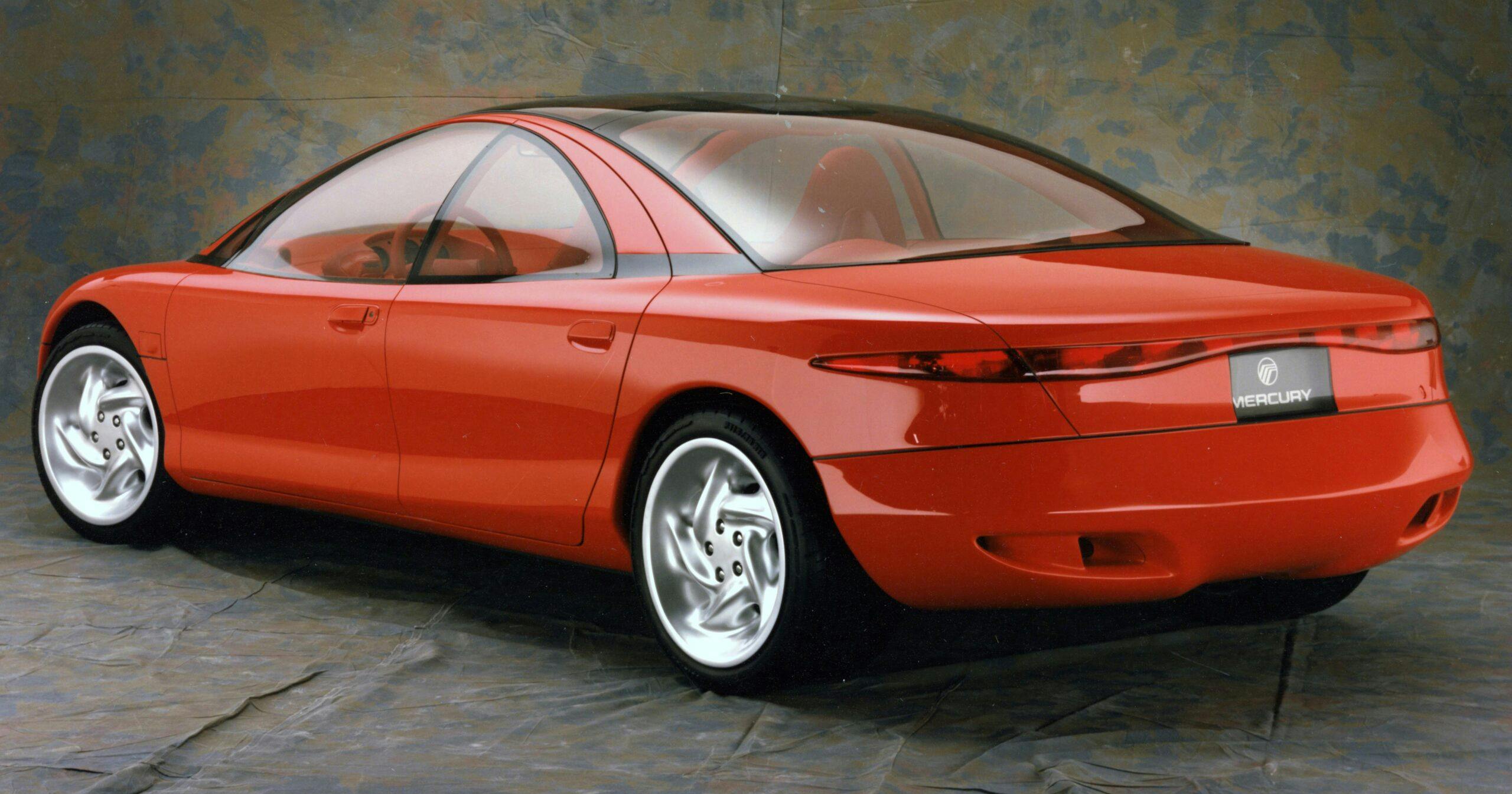
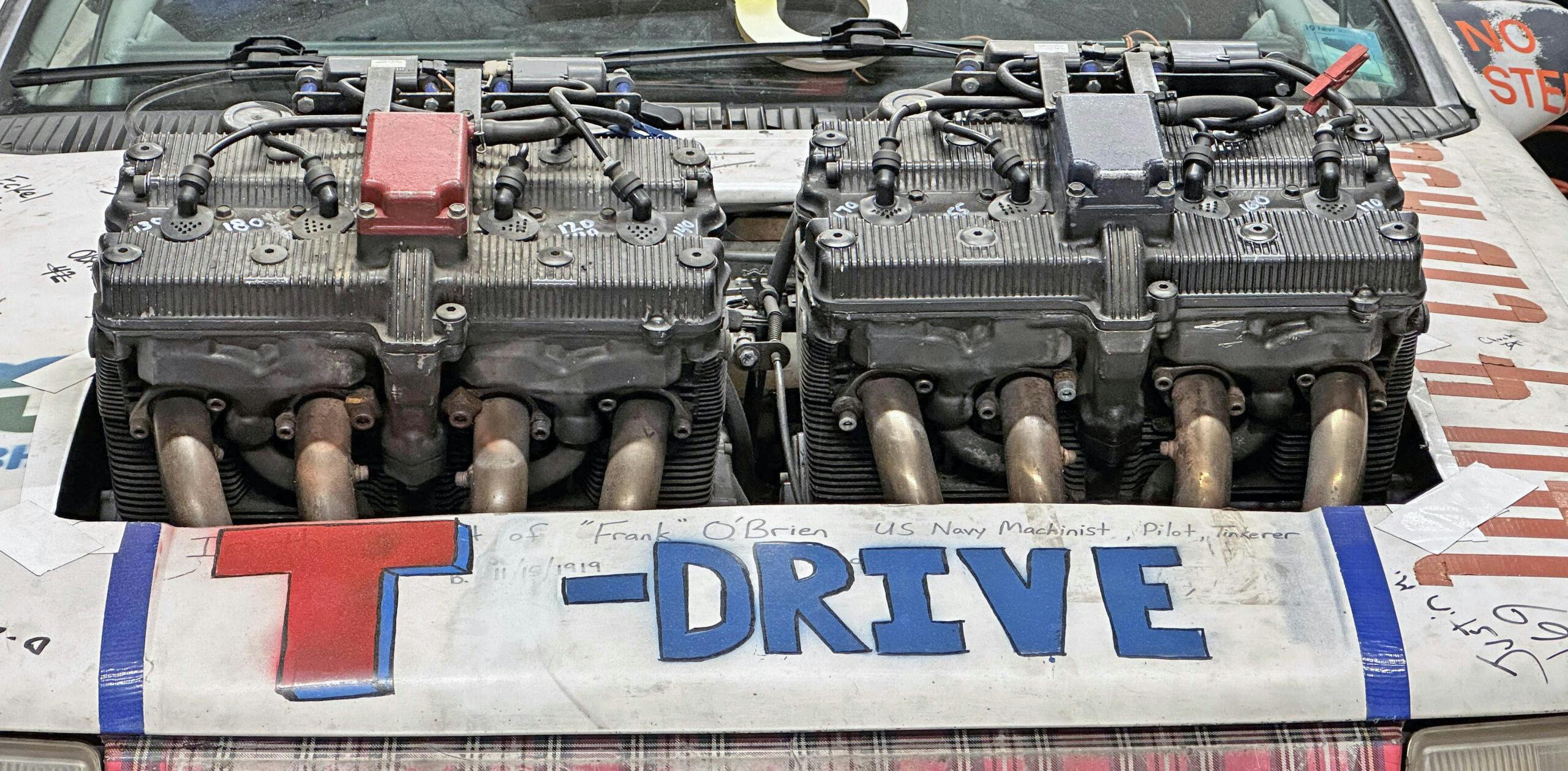
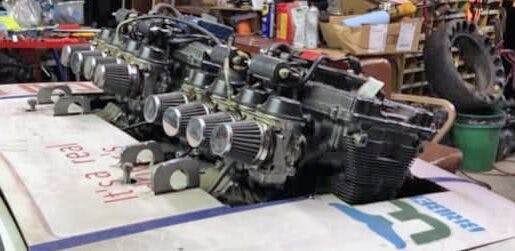
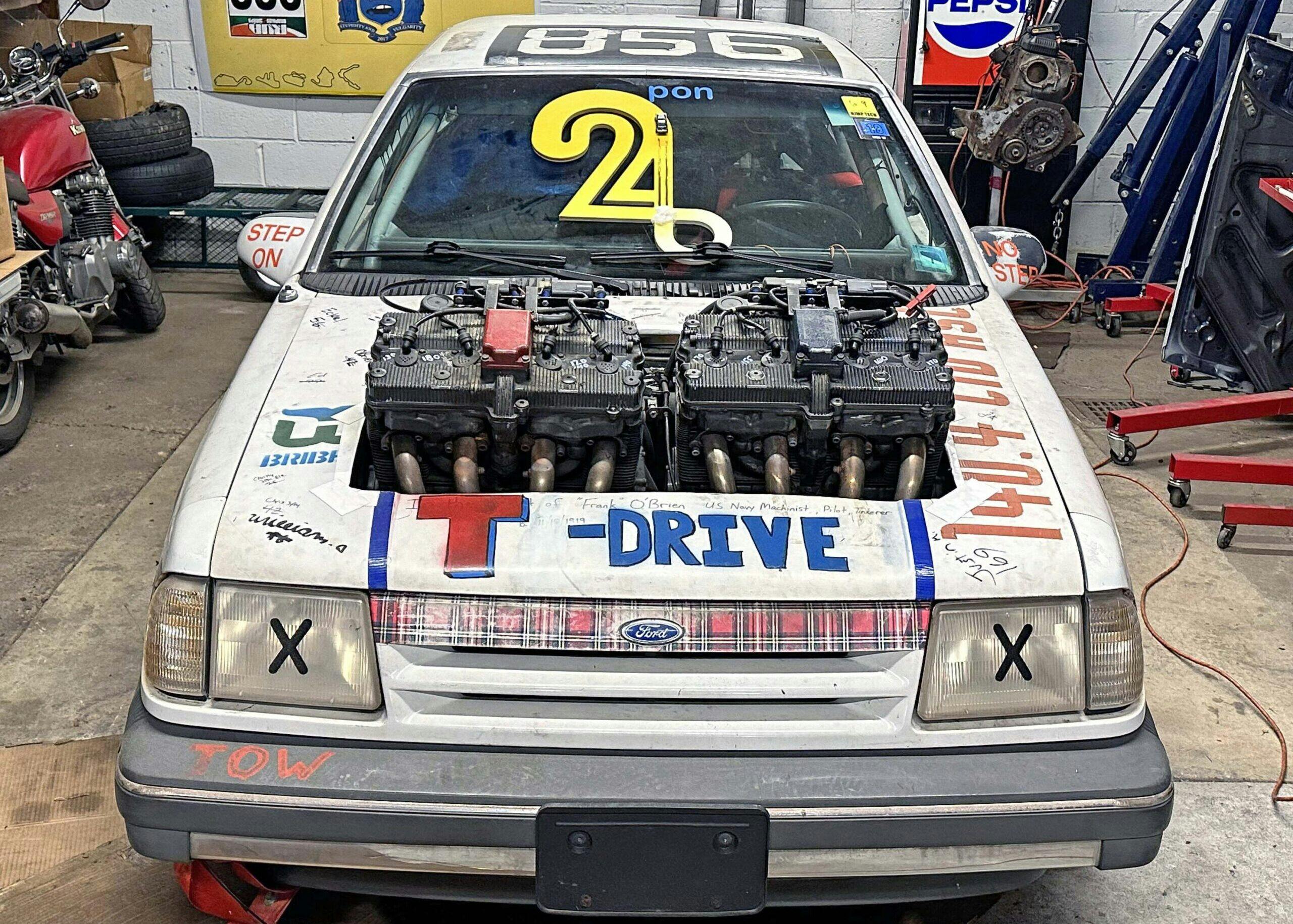
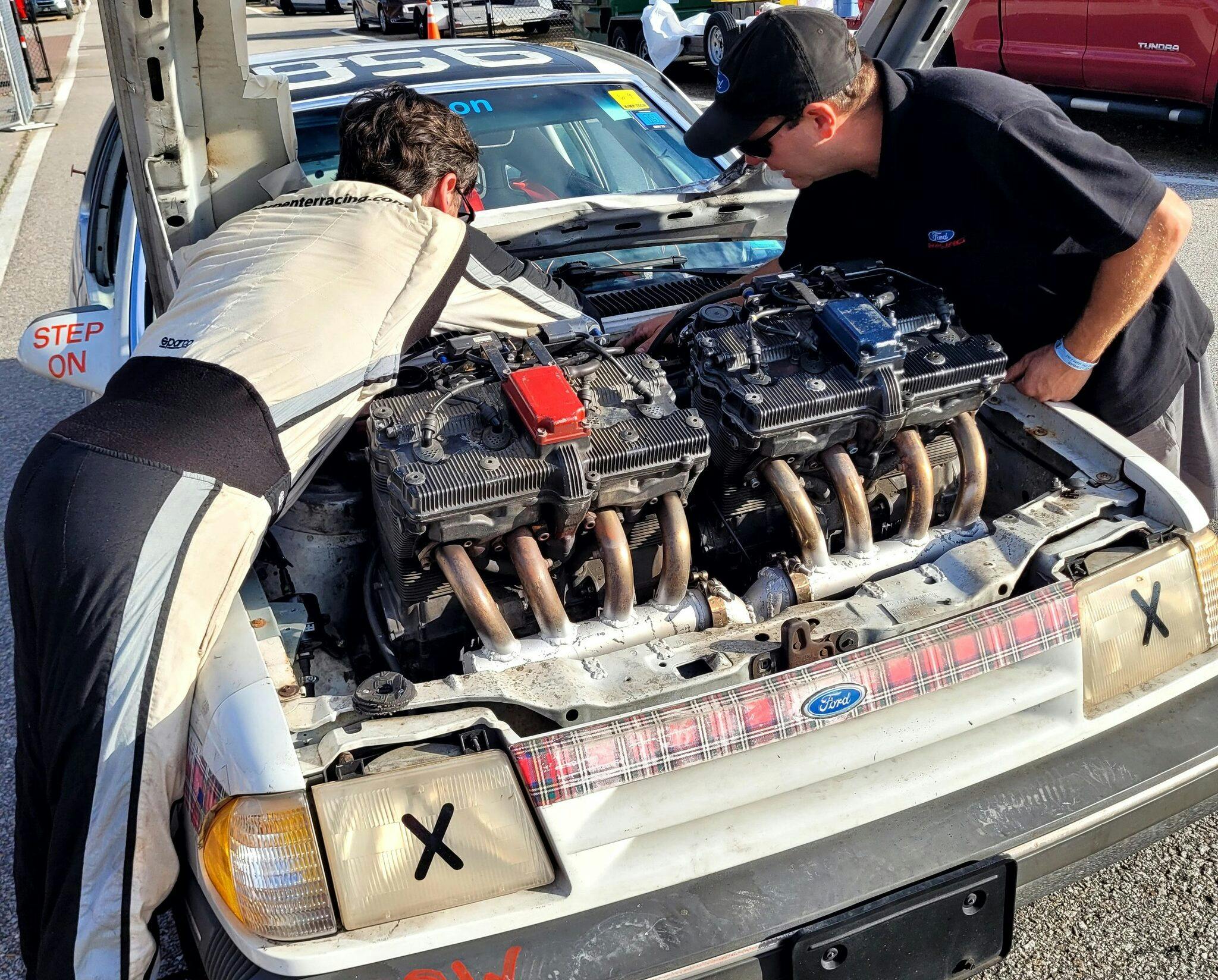
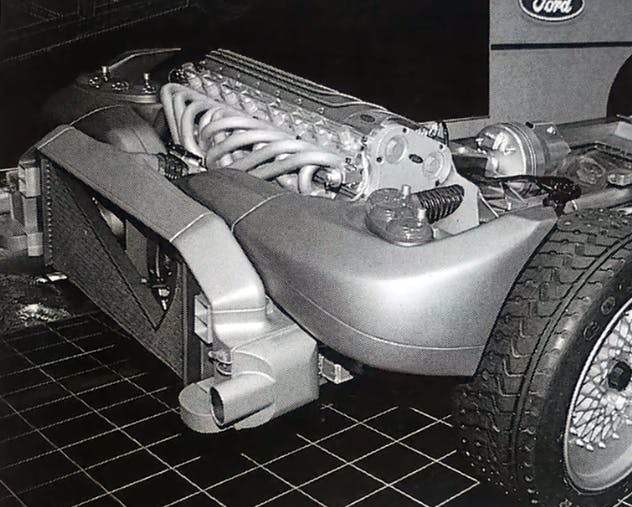


I recall these. As then I still believe they would have had a hard time keeping cost down. Also if the lowered cost the durability would not have been there.
Ford was never was known for the best transmissions.
Anytime you take a driveline from in line weakness comes in unless you over build like the Olds Tornado.
The Mercury and Ford concepts look very interesting, especially that Cyclone.
You could see these concepts led to the disastrous 96 Taurus.
Oh stop it, another one that can’t get past the ovid theme. A car introduced nearly 28 years ago, and you still can’t move on.
Personal tastes aside, I would hardly say the 1996 Taurus was disastrous, Ford sold over 400,000 that year.
Ford was never happy with the 1996 Taurus, sales weren’t high enough and they were a lot more expensive to make. And fleet companies didn’t like all the fancy stuff in the interiors. The styling was a gamble that failed to a certain extent, but overall the GEN III Taurus was a disappointment to its father.
I owned a 1999 Taurus. The looks definitely were unique. It was a great car though. Incredibly roomy inside (cab forward) and the interior was nicer then the Gen IV car which Ford cut back on. They should of come out with the more conservatively styled Gen IV car first instead of something so radical as the Gen III.
I agree with you, my Dad had a 1996 Sable LS back in the day. In hindsight that car was way, way, wayyyyy too nice for its asking price.
Thank you ! As a current owner of a GEN 3 SHO for 25 years now, it makes a BIG hit at the auto shows, even with all the Mustangs in the midst ((O: Most of the younger generation have never seen one, let alone up close and in person. I’m having a great time with the car.
Does anyone know the displacement of the 8 cyl version (Ford’s not the Suzuki)?
From what I have seen in Ford press releases, no such details of the engine or the powertrain were ever made public.
I can understand a straight 8 engine since those were common until the 1950s. I find it harder to understand how one might fit transversely in the engine compartment of a smallish car with a strut front suspension, but maybe that is possible with clever packaging. But the T-drive concept totally escapes me. I assume the output shaft (?) is somewhere between cylinders 4 and 5. But how that then gets transferred to the drive wheels is a mystery.
Wouldn’t it have been easier just to use ONE Suzuki power unit ? Just asking, you know, for a friend…
Somebody wasn’t paying attention in welding class! Or else he forgot his glasses that day.🫣
The wielding made me feel a lot better about mine LOL
With the two suzuki engines it seems like it would have been easy at highway speed to disable one engine and cruise on just one for great gas mileage. Better than GMs 4-6-8 fiasco
Funny that the LeMons crew mentioned Saab among others that should had taken up this T drive concept. Well before the early 90’s, Saab created a 96 often called the Monster. It was a 6 cylinder T-drive using a pair of the 3 cylinder two stroke engines fitted to Saabs in the 60’s.
I would love to see the mechanics of the drive between the engine and input shaft of the transmission.
https://patentimages.storage.googleapis.com/bb/7a/f7/c069d53e71efe0/imgf0007.png
I didn’t read the patent, but looking at the pictures, it appears that there is a hypoid ring gear bolted to an extended crank flange near one of the crank bearing journals. That drives a mating hypoid ring gear that drives the torque converter. Sort of like a ring and pinion in a rear end if the pinion was really big. It appears that the crank ring gear could only be replaced if the bare crank was sitting on the bench so it better be safe life design.
How long before a bean counter wants to machine the ring gear directly onto the crank?
I’ve gotten to where I can tell I’m reading an article by Sajeev without even seeing the credits. And it’s not necessarily because it’s about a Ford. 🙂 So much fascinating information about this engine/drivetrain layout that I’d never before known existed. I’m sure most others didn’t, either.
I’m guessing David Eckel and Greg O’Brien aren’t married, or their wives are used to not seeing them for weeks at a time. I can only imagine the amount of time
wastedinvested in this project. See what I did there, Sajeev? 😉And here I thought I was the only person with that kind of skills! They are both married, but I didn’t interview their spouses to see how dutiful they are outside of the Ford Tempo.
My brother-in-law considered buying the AWD Tempo, to replace the FWD older Tempo he had. In the end, he kept the older one.
Great history and article! Well done!
Thank you, glad you enjoyed it.
One nice thing about pulling the output torque from the middle of the crank is there would be less crank twisting (torsional vibration). Could result in lighter crank.